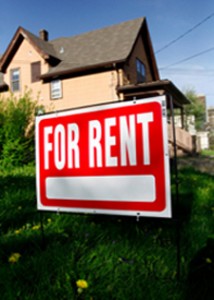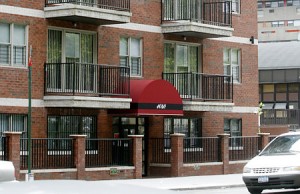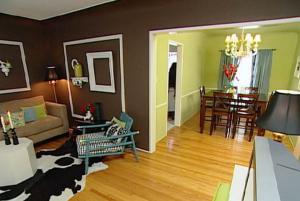Posted by Teresa on June 7, 2013 under Housing Trends, Marketing for Landlords | 

What is walkability, and why is it important to include in your advertising for rental properties? Walkability means that a home is within walking distance to shops, restaurants, public parks, libraries, schools and other places that people frequent.
People like to live in walkable communities, and demand for this feature is growing. Younger renters are particularly interested in areas developed under “New Urbanism” guidelines, which cluster living spaces around open spaces, shops and restaurants. These neighborhoods encourage walking and bicycling, while reducing the need for a car.
Cities that are walkable are growing, are more vibrant and have higher home values. They also typically have higher rents and lower vacancy rates. The ability to walk to the grocery store, their children’s schools, public transportation and coffee shops appeals to tenants who would like to avoid congestion, parking issues and fuel consumption associated with driving.
If you own or manage property in a walkable neighborhood, you should mention it in your advertising, right along with the number of bedrooms, bathrooms, types of appliances and location. In fact, you can plug the property’s address into WalkScore.com and receive a walkability rating. The higher the score, the more walkable the neighborhood. The site even provides maps to restaurants, coffee shops, grocery stores, schools and outdoor spaces.
WalkScore.com also provides links to apartments for rent. You can have a featured listing on their site, get maps to add to your website, or download a badge to that displays the walkability score. You can then add the badge to your site or Craigslist advertisements.
The WalkScore site is easy to navigate and use, and the FAQ page should provide answers to most of your questions. If you’re competing for the best tenants, adding walkability score to your advertisements can help boost your visibility and response!
Posted by Teresa on May 29, 2013 under Housing Trends | 
 Most landlords go the traditional route, with longer-term tenants who sign month-to-month, six-month or one-year leases. Keeping good tenants is the goal, but that is not always achievable. Turnover is sometimes the enemy, because it requires cleaning, repairs, advertising for new tenants, and vetting applicants.
Most landlords go the traditional route, with longer-term tenants who sign month-to-month, six-month or one-year leases. Keeping good tenants is the goal, but that is not always achievable. Turnover is sometimes the enemy, because it requires cleaning, repairs, advertising for new tenants, and vetting applicants.
But more landlords are seeking out vacationers who will rent their properties for a few days, a week or, if they’re lucky—a few months at the most.
Short-term vacation rentals are popping up in cities and towns that aren’t often thought of as vacation destinations, like Columbus, Ohio and Lincoln, Nebraska. Property owners advertise on sites like VRBO.com, where people searching for an alternative to hotels can easily find them.
For many travelers, a furnished apartment or home is a cozier alternative. If they have kids or pets, a vacation rental often works better than a hotel room. Families are renting homes in college towns for homecoming week or sporting events, or during the holidays to be near (but not with) family. Others are working in a town temporarily and need a place for a few months.
These property owners say that vacation rentals are ideal for their situation. They don’t want to deal with long-term renters, and they don’t mind the increased amount of paperwork and cleaning that comes with the territory. Besides, higher rents make up for it. Depending on location, vacation rentals can go for $100 – $500 per night and thousands per week.
One Columbus property owner rented her home for 140 nights at around $200 per night. Another focuses on weekend rentals, and is booked for around 45 weekends per year. The secret to success, they say, is hands-on management of the property.
If you’ve ever thought about renting your property as a vacation rental, check out sites like VRBO.com and HomeAway.com. Make sure you conduct background checks on renters, and ask other landlords about their experiences. It’s not for everyone, but the vacation rental business might be right for you!
Posted by Teresa on April 5, 2013 under Housing Trends, Legal | 
 Not everyone loves a landlord. Some homeowners dislike having too many rental properties in their neighborhoods. They think that rentals decrease property values and degrade the community.
Not everyone loves a landlord. Some homeowners dislike having too many rental properties in their neighborhoods. They think that rentals decrease property values and degrade the community.
One town decided to take steps to limit the number of rentals allowed in a neighborhood. West St. Paul, Minnesota passed a law, effective January 1 of this year, which permits no more than 10% of homes on a block to be rental properties.
West St. Paul has had more than its share of foreclosures. Home values have fallen. But there’s little evidence that the number of tenants living in its neighborhoods has anything to do with it. Studies provide mixed results; some say higher rates of homeownership raises home values, but others conclude that even large, mixed-income, multifamily rental properties don’t affect the values of surrounding single-family homes.
Besides, with all the foreclosures in the town, where are former homeowners supposed to live? Not in West St. Paul. And not in Madison, Mississippi, which banned all rentals in 2009. In addition, what about homeowners who need to sell a home to take a better job elsewhere, but are unable to sell? What if they’re not allowed to rent their home? How many will walk away from their mortgages and ruin their credit history?
Not surprisingly, homeowners are not taking this lying down. They’re filing lawsuits, claiming that renting one’s own property is a legitimate property right.
Municipalities might mean well by limiting the number of rental properties on a block, but it seems like a recipe for disaster. Americans are demanding more flexible housing, with less upkeep and expense , the ability to move at the end of a lease without penalty and no worries about falling home prices wiping out their equity.
If surrounding homeowners worry about their home values, they can insist on stronger laws that support landlords’ efforts to keep their properties in good shape, and limit noise and other nuisances. They can get to know the landlord and the tenants that own and live in the rental properties in their neighborhoods. Communication is a better way to start than passing laws to prevent property owners from leasing their properties.
Posted by Teresa on April 3, 2013 under Housing Trends | 
 The U.S. Department of Housing and Urban Development and the U.S. Census Bureau recently conducted a survey to gather more data on the country’s multifamily rental properties. Multifamily rentals numbered approximately 2.3 million in the U.S., but little was known on their value, or how they are financed.
The U.S. Department of Housing and Urban Development and the U.S. Census Bureau recently conducted a survey to gather more data on the country’s multifamily rental properties. Multifamily rentals numbered approximately 2.3 million in the U.S., but little was known on their value, or how they are financed.
Recent data shows that approximately one in five American households live in multifamily rental properties, most of which are owned by individuals—not large companies.
The two agencies produced a report that combined existing information and new data on number of units, value, ownership status, mortgage financing, Federal and state benefits, and other information.
A few statistics from the survey:
- 73% of multifamily rentals are comprised of one building.
- 67% are owned by households or individuals.
- 77% provide parking.
- 19% have buildings built before 1920.
- 87% of owners reported making repairs to their properties in 2010 or 2011; the median cost was $699 per unit.
- In multifamily rental properties with 50 or more units, 45% have 20 or more buildings.
- 73% were acquired by their owners before 2005.
It’s clear that not all Americans can or want to buy their own home. For some, renting is a way of life; for others, it’s the only viable option available. Multifamily rental housing, according to the report, is “critical to solving the nation’s affordable housing problems.”
Posted by Teresa on February 27, 2013 under Housing Trends, Landlord Tips | 
 College expenses are climbing higher and higher. Not only are tuition and fees going up, but so are room and board. Parents and independent college students are looking for cheaper alternatives to campus housing.
College expenses are climbing higher and higher. Not only are tuition and fees going up, but so are room and board. Parents and independent college students are looking for cheaper alternatives to campus housing.
And more investors are looking into this market, because college student housing can be a lucrative investment. When housing is hard to come by, vacancy is not usually a problem. Nor is getting market rents or above.
While renting to students has its downsides, the parents are often footing the bill, so the rent checks come in regularly from mom and dad. After all, they don’t want their kids coming home, so they’d better pay the rent, right?
Here are some tips for renting to students:
- Make sure you have an solid lease. Include details about noise restrictions, unauthorized roommates, damages and any other expectations you have for your tenants.
- Have each student who will be living in your rental property apply separately, put each on the lease and have their parents or guardians co-sign the lease.
- Screen each potential tenant. Tenant screening for younger college students might seem unnecessary, but most students have a credit history—and many have criminal histories. You nee to know who you are renting to.
- Let each tenant know that they are jointly and individually responsible for the entire rent payment. If one roommate can’t pay his or her share, it is up to the rest to cover it. Make it clear that you won’t accept partial rent payments.
- Enforce your rules whenever there is an incident. Young people often push limits to see how far they can go. When they see you mean business, they will—hopefully—act accordingly.
- Make sure your insurance policy covers renting to students. Many companies are starting to restrict coverage in certain towns.
Countless landlords successfully lease their properties to college students. And many of them actually enjoy it! Just keep an eye on your property and the lines of communication open.
Start your tenant relationship off right by knowing who you’re leasing to. Protect your rental property and assets with tenant background checks. Proper tenant screening will ensure you are leasing to the best possible tenants.
Posted by Teresa on January 21, 2013 under Housing Trends | 
 Some of the housing markets hit hard by the housing bubble were Phoenix, Las Vegas, Tampa and several markets in California. As prices fell to rock bottom levels, real estate investors made major purchases in these markets. And now, as prices begin rising, investment groups are looking for the next place to find a bargain.
Some of the housing markets hit hard by the housing bubble were Phoenix, Las Vegas, Tampa and several markets in California. As prices fell to rock bottom levels, real estate investors made major purchases in these markets. And now, as prices begin rising, investment groups are looking for the next place to find a bargain.
In Phoenix, the percentage of homes purchased by investors in November 2012 was 28%, down from August’s mark of 36%. Meanwhile, year-over-year home prices in Phoenix were up 24% in November, compared to 7.4% nationwide.
Investors are looking for new markets to buy homes and convert them to rental properties. According to a recent JPMorgan Chase research report, major institutional investors are planning to invest as much as $10 billion in the single-family rental market. Their targets? Three bedroom, two-bath homes in the $100,000 to $125,000 range. They’ll make repairs, rent them out, and bet on the price appreciating in the next several years.
That figure equals about 80,000 homes, out of approximately 12 million single-family rental homes across the nation, which are mostly owned by individual investors.
Some of the bigger players are:
- The Blackstone Group, which has spent $2.5 billion on 16,000 homes. It is purchasing around 2,500 homes each month.
- Colony Capital, which is investing up to $150 million per month this year, after purchasing 5,000 homes last year.
- Waypoint Homes, which expects to own 10,000 homes by the end of the year.
Many groups started in Phoenix, then went into California, Atlanta, Tampa, Orlando, Chicago, Las Vegas and Charlotte. Some are buying at a faster pace, perhaps because home prices are rising faster than expected. If prices rise above a certain point, they won’t bring high enough rents to make a sound investment.
Real estate markets in Atlanta and Tampa are now seeing the impact of investors coming in, with dozens of offers on foreclosed homes, many by cash-paying buyers. Good buys are becoming harder to find. Individual homebuyers are seeing more competition from small and large investors, resulting in bidding wars and reducing inventories of homes for sale.
Nationwide, investors purchased 19% of homes in November, according to the National Association of Realtors, which is down 23% from January and February 2012. Areas where investor sales are leveling off include Tucson; Oakland; Tacoma, Washington; Washington D.C. and Durham, N.C.
This pattern is expected to continue as home prices rise and investors exit out of markets, then return when prices stabilize.
Posted by Teresa on November 30, 2012 under Housing Trends, Landlord and Tenant FAQs | 
 Do you furnish your rental properties or have you ever considered it? What are the advantages and disadvantages? We’ve looked around and found that while the vast majority of landlords rent their properties without furnishings, some find that doing so gives them an advantage for a niche that works.
Do you furnish your rental properties or have you ever considered it? What are the advantages and disadvantages? We’ve looked around and found that while the vast majority of landlords rent their properties without furnishings, some find that doing so gives them an advantage for a niche that works.
Advantages of furnished rentals:
• Higher rent: In some areas, furnishing a rental property can as much as double the rent.
• Higher-end tenant: With the right location, amenities and furnishings, you could attract a higher-end tenant, such as relocating executives or long-term vacationers with money to spend on a nice place.
• You’re covered: Security deposits don’t usually include the value of the furnishings (that would be cost prohibitive for most tenants), but in case anything is damaged or needs to be replaced, your insurance policy should cover it. Check with your agent.
Disadvantages of furnished rentals:
• More headaches in the maintenance department. You’ll need to add cleaning, repairing and replacing furniture to your maintenance list.
• Inventory troubles: Documenting the condition of furnishings at move in and move out times will be added work. Consider that many furnished rentals also include dishes, kitchen tools and silverware, and you can see that keeping inventory could be tedious. More stuff means more things to go missing, too.
• Short-term tenants. Folks who are looking for furnished apartments are not usually long-term lease signers. They’re often starting a new job in a new place, starting over in their personal lives, or in a temporary living situation due to an emergency.
As with anything, if you invest too little in your furnishings, you’ll probably have to replace them more often. On the other hand, it doesn’t make sense to spend a lot on furniture, electronics and lighting that could be subject to abuse. Think about your target market. If you’re going for lower-income tenants, you won’t be able to afford expensive furnishings. If you’re targeting executive, vacation or high-end tenants, they will expect nice furnishings—and be willing to pay for them.
If you’d like to gauge the demand for furnished rentals in your area, talk to local real estate agents. They often specialize in corporate relocations, or could refer tenants who are buying in the area but haven’t found the right property yet.
Start your tenant relationship off right by knowing who you’re leasing to. Protect your rental property and assets with tenant background checks. Proper tenant screening will ensure you are leasing to the best possible tenants.
Posted by Teresa on October 17, 2012 under Housing Trends, Landlord Tips | 
 What do tenants want? What is the competition offering? These are two questions that every landlord should be able to answer. As in any business, it’s imperative to know what your customers’ needs are, what they prefer, and why they’re buying from the competition. In the landlord business, providing tenants with the amenities and features that the want, can keep them from going to the competition.
What do tenants want? What is the competition offering? These are two questions that every landlord should be able to answer. As in any business, it’s imperative to know what your customers’ needs are, what they prefer, and why they’re buying from the competition. In the landlord business, providing tenants with the amenities and features that the want, can keep them from going to the competition.
If you want quality tenants who stick around and renew their leases, then consider the following upgrades, which most tenants love:
Washers and dryers: Stackable units are made for small spaces. For not a ton of money, you could add a washer and dryer to a utility closet. Or install full-size appliances on a back porch or basement of a single-family unit or duplex. Tenants love not having to go to the Laundromat.
Wood floors: Most landlords cringe at the thought of installing easily-scratched wood floors, but there are new materials that look just as good and are super tough. Laminate flooring is perfect for rentals, is very dependable and easy to maintain.
Fenced yards: Your pet-loving tenants will especially appreciate a fenced-in yard. So will those with kids they’d like to keep an eye on. And everyone likes the privacy factor.
Storage: Most tenants will never complain about too much storage. Whether it’s bigger closets, built-in bookcases, shelves in the kitchen and bathrooms or an outdoor shed, you can’t go wrong adding a little extra storage.
Updated fixtures: Old, outdated lighting fixtures can be depressing. It doesn’t take much time or money to install new ceiling light fixtures, as well as new lighting in the kitchen and bathroom. While you’re at it, put in a fluorescent under-cabinet kitchen light to brighten the room.
Patios: Most everyone loves to be outside when the weather permits. Even a small concrete pad or flagstone patio can pay for itself when prospective tenants see it.
It’s always a good idea to shop around and see what comparable rental units have to offer, as well as what they are renting for. If you’re having trouble attracting or keeping good tenants, consider upgrading your units to give them what they want!
Start your tenant relationship off right by knowing who you’re leasing to. Protect your rental property and assets with tenant background checks. Proper tenant screening will ensure you are leasing to the best possible tenants.
Posted by Teresa on September 18, 2012 under Housing Trends | 
 The United States has long had a policy of promoting homeownership. Federal expenditures in the form of direct spending and tax subsidies benefit homeowners in all income brackets—including those who could afford homes without the subsidies.
The United States has long had a policy of promoting homeownership. Federal expenditures in the form of direct spending and tax subsidies benefit homeowners in all income brackets—including those who could afford homes without the subsidies.
Lower-income families typically spend more of their incomes for housing than higher earners. They also face other housing difficulties, such as instability and even homelessness, which are alleviated by rental assistance programs. However, federal rental assistance programs are currently reaching only one in four eligible tenants, due to limitations on funding.
Policymakers are introducing reforms to the homeownership mortgage interest tax deduction as an attempt to reduce the federal budget deficit. Some say the savings should be funneled to lower income renters in the form of a federal tax credit, administered by the states.
The idea is to provide credits to poor families so they can afford rental housing, to lift them out of poverty and positively impact children’s health and long-term development. Families would pay no more than 30% of their income on rent, while credits would pay the remainder. Landlords would be able to claim a federal tax credit on any rent reductions provided to families, or pass the credit to the mortgage holder in return for a reduction in payments.
Supporters say rental assistance can move the elderly or those with disabilities out of nursing homes and into housing that better meets their needs, provide support for families at risk of having their children placed in foster care and reduce homelessness among veterans and other at-risk groups.
Posted by Teresa on August 29, 2012 under Housing Trends, Rental Market | 
 Whether you’re a parent of a college student or an investor in real estate, some college towns are more attractive than others. In some of the country’s hottest rental markets, landlords who own rental housing are seeing low vacancies and higher rents, while parents of college students might be finding it difficult to buy an investment property for their kids to live in while in school.
Whether you’re a parent of a college student or an investor in real estate, some college towns are more attractive than others. In some of the country’s hottest rental markets, landlords who own rental housing are seeing low vacancies and higher rents, while parents of college students might be finding it difficult to buy an investment property for their kids to live in while in school.
Buying a rental property often makes more sense for parents than paying ever-rising costs of room and board or off-campus rent. But they may be competing with experienced landlords when it comes to purchasing reasonably priced properties in today’s competitive markets.
According to Realtor.com, the following markets show promise for parents and other real estate investors:
| City |
Median Home Price |
Average Rent |
| Boston |
$334,900 |
$3,084 |
| Washington, DC |
$395,000 |
$2,637 |
| Los Angeles |
$358,000 |
$2,290 |
| Princeton, NJ |
$265,000 |
$2,056 |
| Chicago, IL |
$194,000 |
$1,630 |
| Providence, RI |
$259,000 |
$1,527 |
| Philadelphia, PA |
$234,900 |
$1,475 |
| Pittsburgh, PA |
$140,000 |
$1,122 |
| Atlanta, GA |
$175,900 |
$1,187 |
Of course, owning rental property and leasing to college students presents another set of challenges. Study the market, consult your tax, legal and financial advisors, and decide whether the pros and cons work out for your needs and personal situation.
No matter who you are leasing to, you need to protect your rental property and assets with tenant background checks. Proper tenant screening will ensure you are leasing to the best possible tenants.










